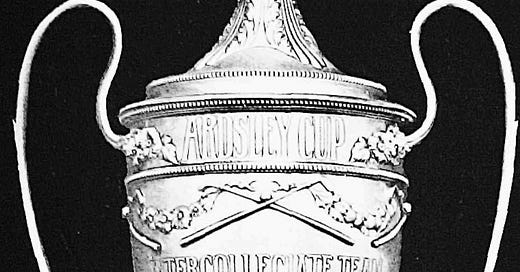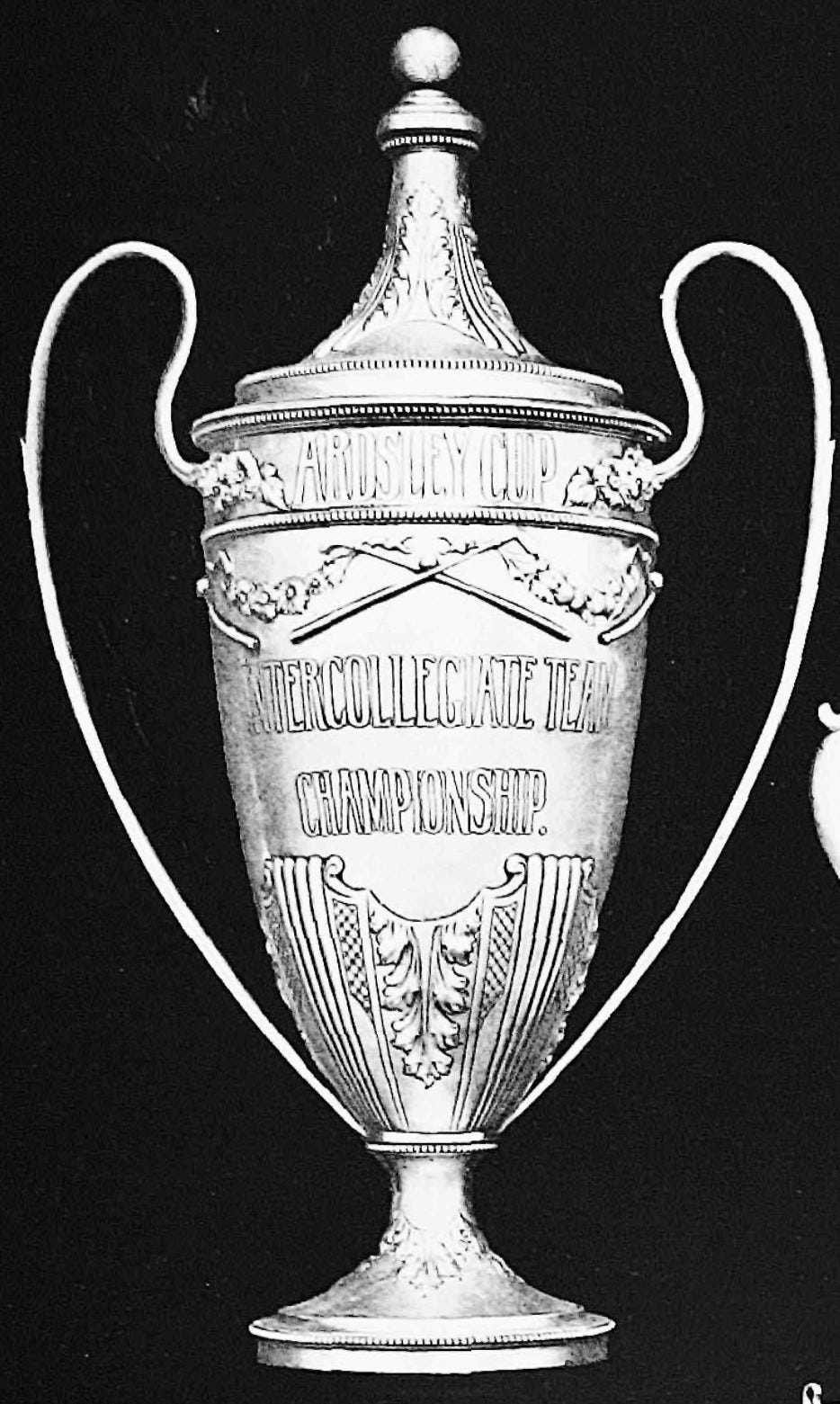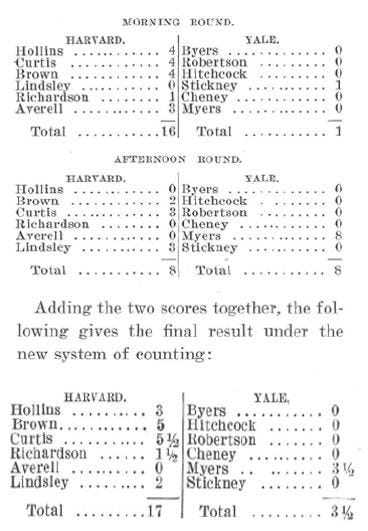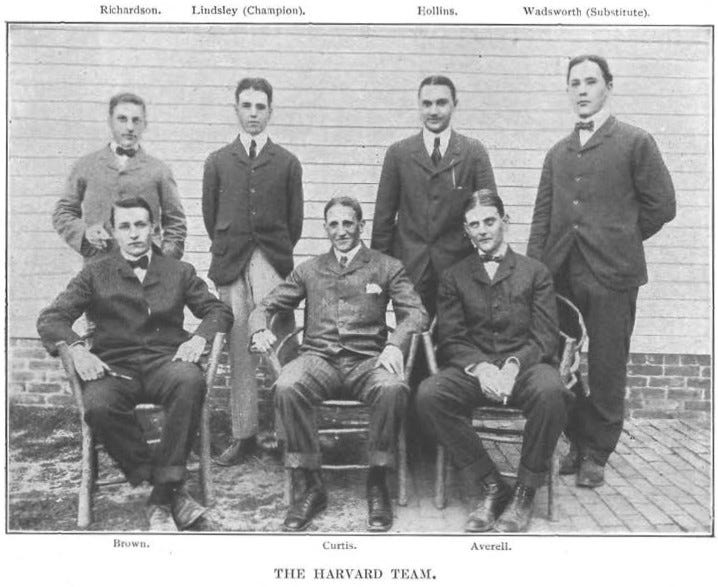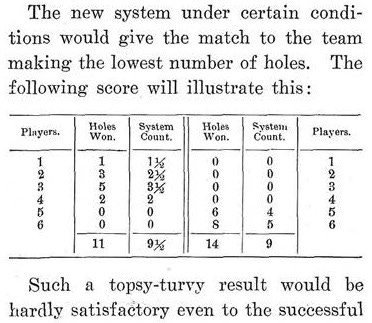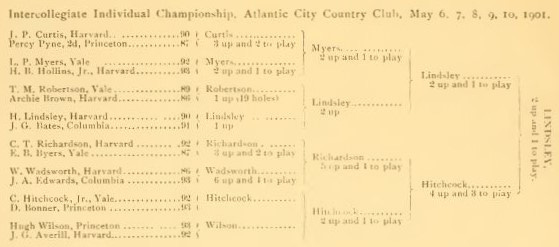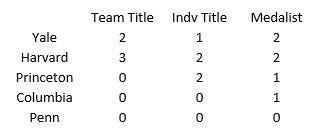This is part of a series on the Men’s Collegiate Championships
IGA Championship Era: 1897-1938
The above trophy, known as the Ardsley Cup and generously donated by the host Ardsley Casino club, was presented to the team champion starting with the very first intercollegiate golf championship. With Yale winning the first two events and Harvard the second two - the most recent being the 1899 championship - the 1901 championship set up to be an epic showdown for a third title, earning the winner rights to permanently keep the cup.
Intercollegiate Championship #5: May 07-11, 1901
Host: Atlantic City CC (Northfield, NJ)
Atlantic City CC not only hosted this championship, but also the US Amateur in September where a couple of the collegiate players would make a fine showing: Eben Byers making it into the second round and Percy Pyne 2nd the semifinals. Another player who had his eyes set on playing college golf at Harvard in another year was young Walter Egan who surprised most by making it all the way to the Finals against Walter Travis.
Format
Team match play (5 teams, 6 players each, random draw)
A special new bracket is needed to accommodate the extra team
New Scoring Format: referred to in at least one instance as Horace Hutchinson’s “English System”
added to the team total = 1 point for winning the individual match +PLUS+ half the number of net holes won by
Individual stroke play qualifier (18 holes)
Individual match play (*16 players, random draw)
Results
Team Champ: Harvard (3)
Adding a fifth team into the mix made things even more interesting than they already were with the drama of Harvard and Yale trying to secure the final win needed to keep the beautiful(ly expensive) Ardsley Cup. The bracket the IGA agreed on required a preliminary match in the morning of the first day and by random draw that brought together Harvard and Princeton. Harvard looked every bit the reigning champs and favorites in first their morning then afternoon matches. With Yale also taking care of business in their only match of the day, that brought to head the decisive match for the championship and the cup.
On paper, the title fight was an even one. Harvard did what champions do, though, which is win the swing matches. Leading the way was Harvard freshman HB Hollins Jr - son of the first Metropolitan Golf Association (MGA) president - who bested Yale university champ Eben Byers. Next, Yale captain TM Robertson suffered an unexpectedly heavy defeat at the hands of 1898 Spring individual champ James Curtis. Finally, another young but increasingly well-known Harvard star, Archie Brown, gained a surprising victory over last year’s medalist Charles Hitchcock.
As a final aside, it should be noted that while there are occasional discrepancies between newspaper accounts and national publications such as USGA’s Golf, generally speaking there is usually a consensus enough to determine what the actual right scores were. Frustratingly, there are close to an equal number of sources that put the final score at either those seen below or something a little closer (13.5 - 3.5), made all the more confusing with more than one respected newspaper detailing individual matches with slightly different hole-by-hole scores. While this makes for a databasing nightmare, the fact remains that Harvard is the consensus champion.
It is unknown at the time of this writing if the school still has the Ardsley Cup in its possession.UPDATE (2024): thanks to some clever sleuthing by Andy Isztwan and his son Brian Isztwan (2023) we now know that the Ardsley Cup does indeed reside safe and well cared for in the Harvard trophy case!
Despite its potential problems, the new format was generally considered successful enough that the teams agreed to continue using it. At the time it was adopted, proponents of the system were said to have looked at a large number of past match play records (from various events) and determined this was the most fair system to reward the fine play while also limiting the effect that a blowout match would have on the team score. Detractors of the system pointed out the problematic flaw that a team could win the overall match while actually winning fewer holes (as demonstrated below). The counter-argument to this was that in this case the winning team also won the most matches, which feels like the team that should be declared the winner. This line of thinking seems to lead one naturally to just awarding a single point for a won match and be done with it - something that had in fact been suggested several times.
If you recall the team scores from the 1898 Fall championship that resulted in a tie under the old/first system, Yale would have won 9.5-7.5 under this new system.
Medalist: Archie Brown [Harvard] & W Wadsworth [Harvard]
Harvard players continued their spectacular play, earning the school not only its first medalist but its second as well. For the first time in tournament history, players tied for medalist honors and it just so happens they’re both from the same school. There is no indication that they held a tie-breaker. It’s interesting to note that Wadsworth was considered a substitute for the team, playing as an individual. Another first for the tournament was increasing the match play slots to 16.
Individual Champ: Halstead Lindsley [Harvard]
Although the IGA continued to make tweaks to ensure the importance of the team championship, the fact remains that it was the individual match play that drew the most crowds, who were well rewarded in this year’s matches. In the first round, two former champions met for the first time as James Curtis (1898, Spring) defeated Percy Pyne 2nd (1899). Unsurprisingly, it came down to Harvard and Yale players in the semifinals. Hitchcock, who disappointed in the team event, was able to best his Harvard opponent to make the finals while Myers, who secured the only Yale points, fell to his. Hitchcock was the perceived favorite in the Final match against Lindsley, but the latter cruised through the first 18 and then held onto the lead coming down the stretch to win 2&1.
Not only is this the first time that a team captures both the team and individual championship in the same tournament, this actually marks the first time that a team swept all three of the awards. It’s fair to say that Harvard is firmly in “dynasty” territory.
Championship Award Count
EXTRA HOLES: Eben Byers
There are two frankly incredible things to note about Yale’s Eben Byers. On the positive side, he was the first player to appear in the collegiate championships and later win the US Amateur (1906) after runner-up finishes in 1902 and 1903. Tragically, Eben’s horrific death from radium poisoning overshadowed his life’s accomplishments.


Thanks for reading!
Up Next:
In the next post we will cover the double championship of 1902. That’s right, we’re doing this again!

